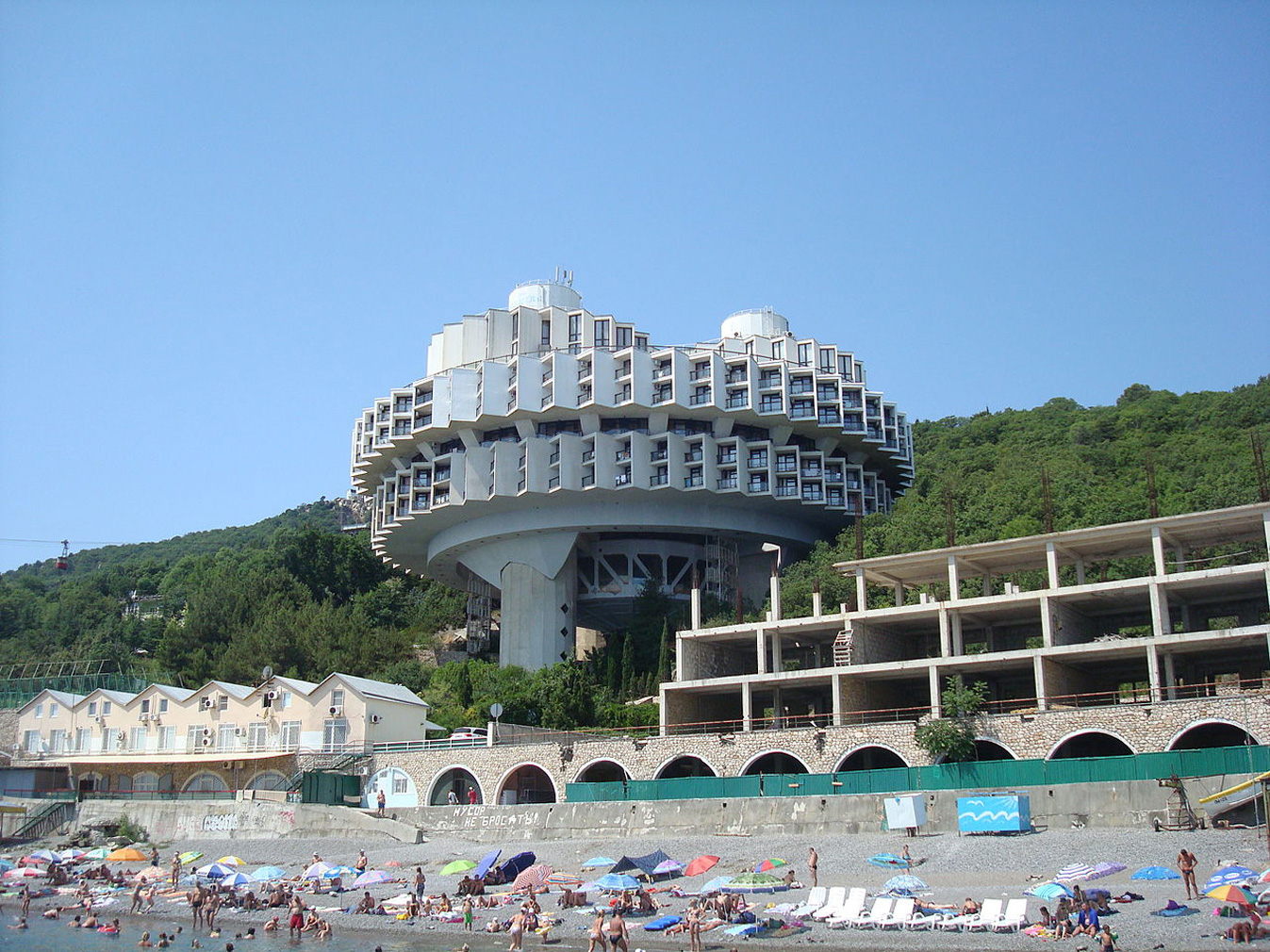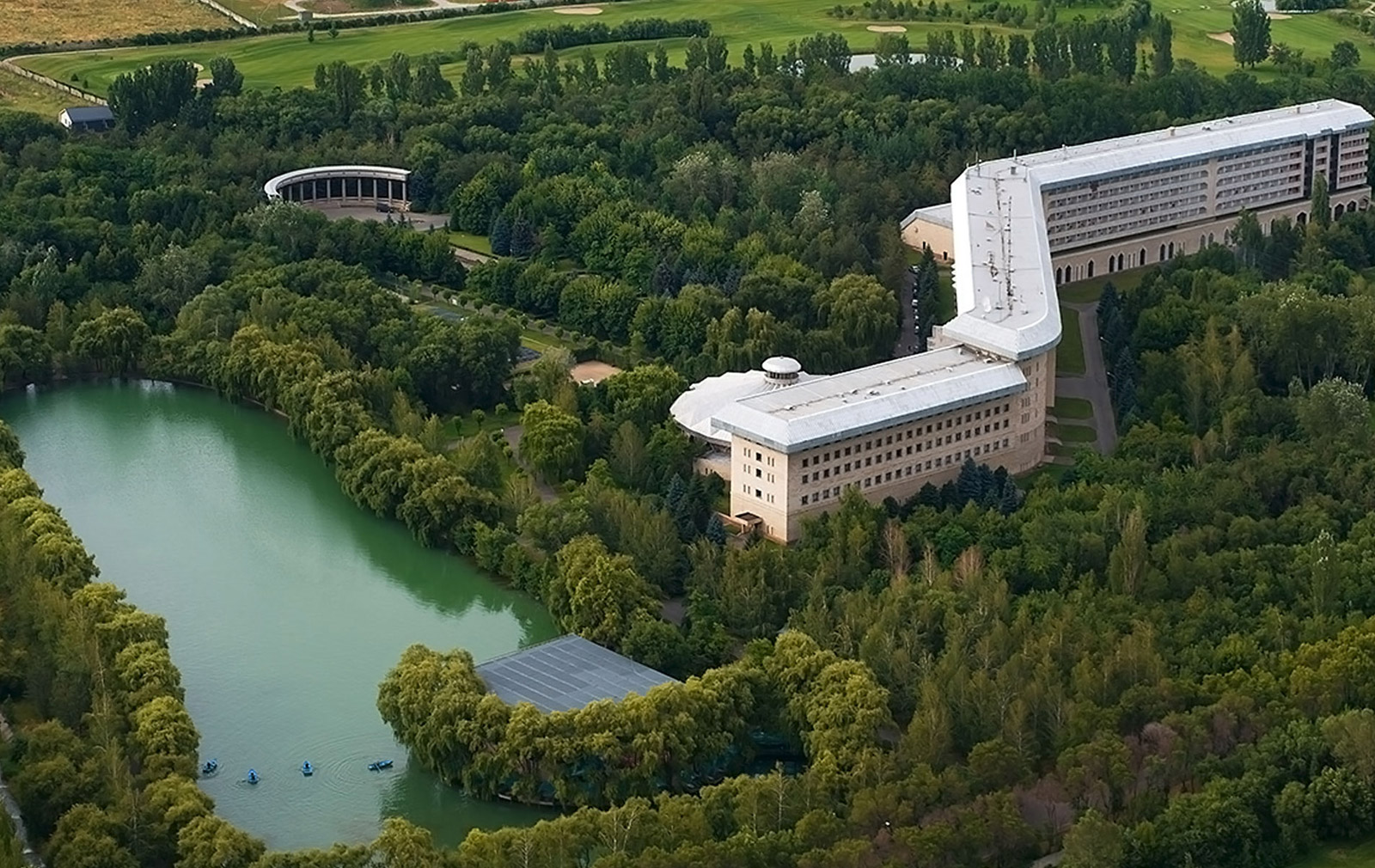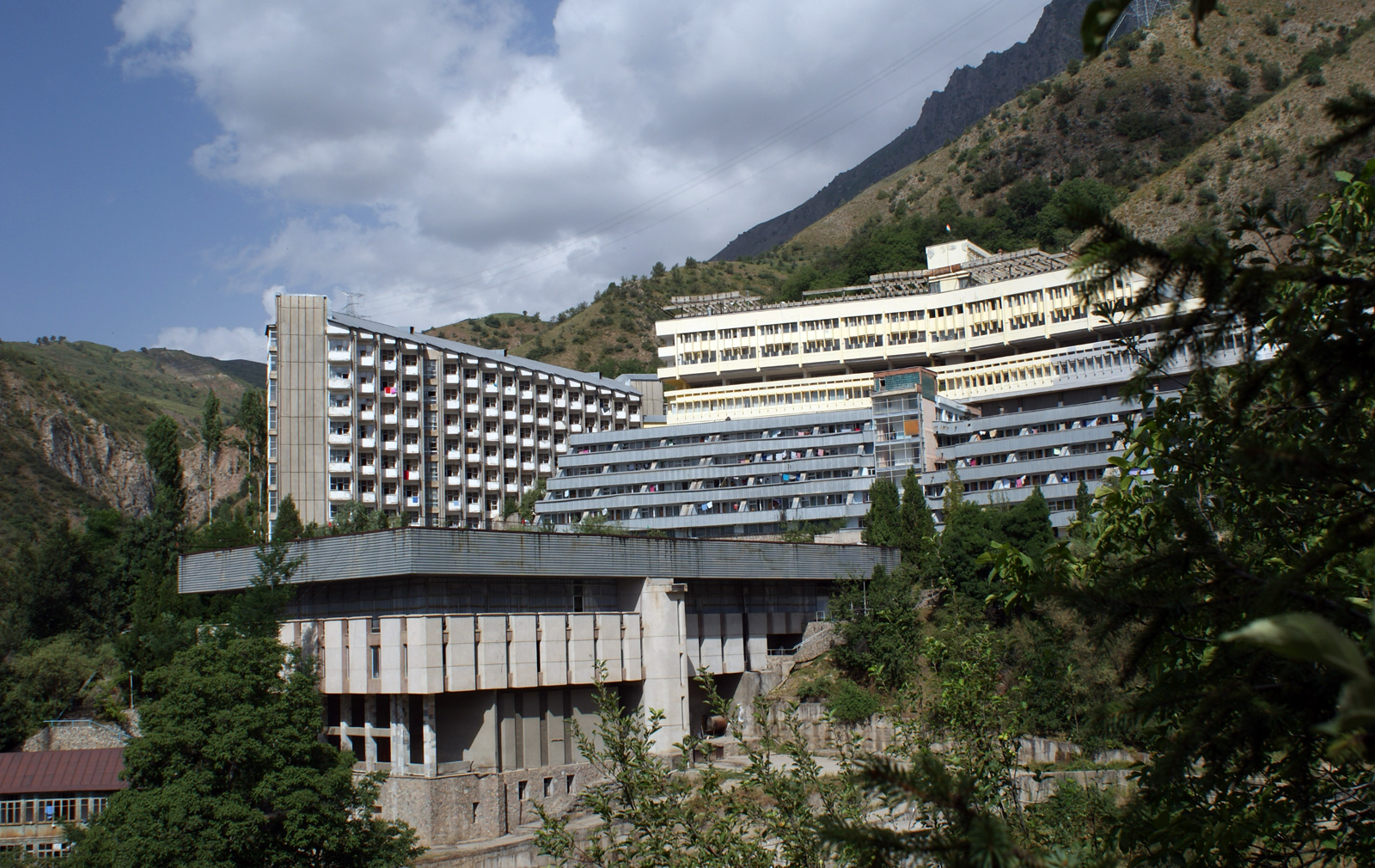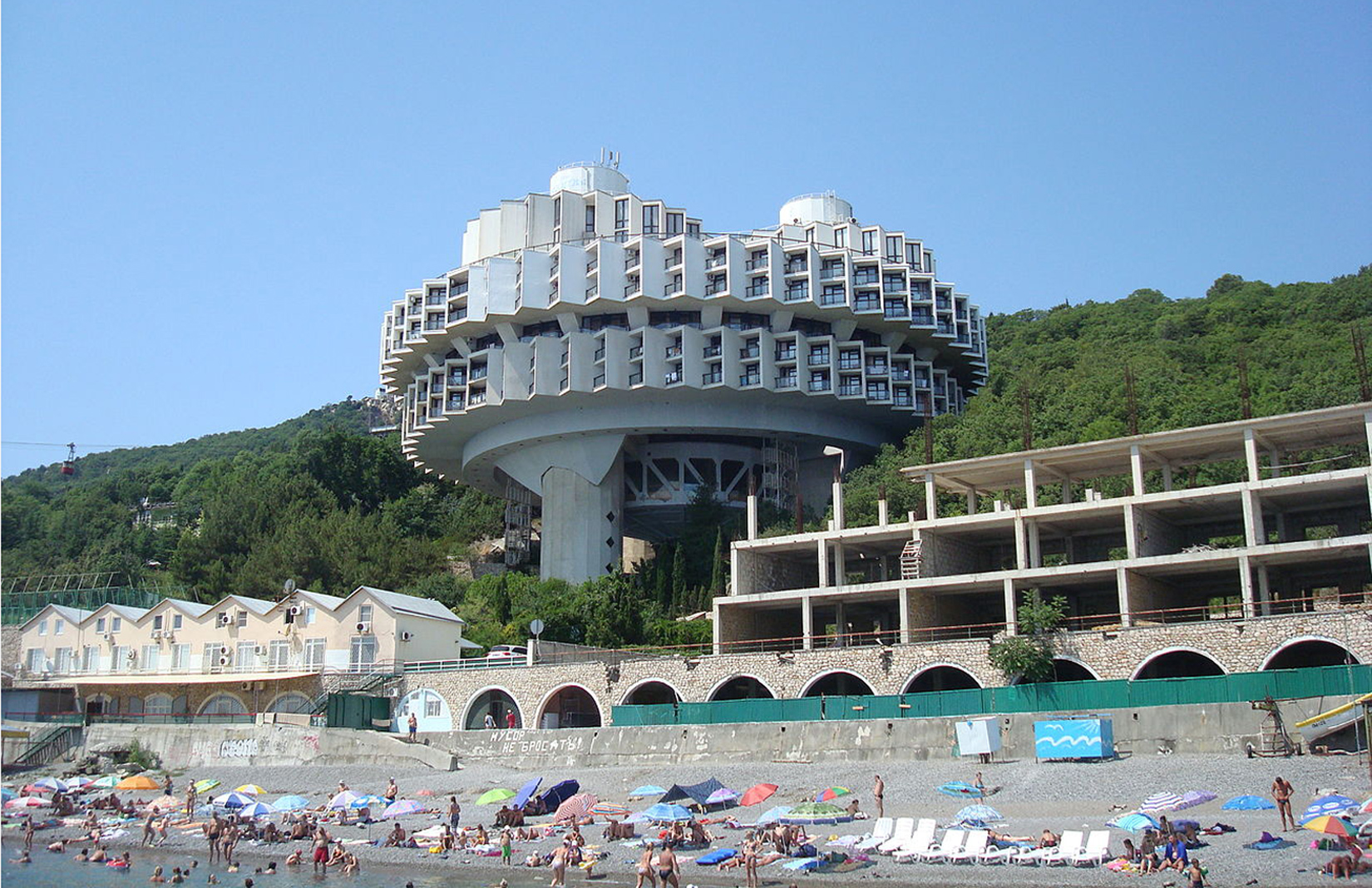
‘During the days of Soviet Union, rest was seen as purposeful,’ says writer Maryam Omidi. ‘The aim was to recover from working hard throughout the year so that you could return refreshed and productive’.
To revive its tired workforce, the Kremlin constructed hundreds of sanatoriums across the country, where workers could spend their state-funded two week vacation relaxing under the watchful gaze of health professionals who advised them on everything from diet to sunbathing.
Twenty-five years after the collapse of the USSR, many of these sanatoriums are still in use as health resorts, while others have been left to languish and ruin. Omidi has launched a kickstarter campaign to create a book documenting these monuments – and their afterlives.
Omidi and six-strong team of seasoned photographers – Michal Solarski, Egor Rogalev, Dmitry Lookianov, René Fietzek, Claudine Doury and Olya Ivanova – are hoping to travel to sanatoriums across the Soviet realm, from Kazakhstan to the wine-growing region of Georgia, to create a visual ode to the best health spas still in use today. That’s where their Kickstarter campaign comes in.
She tells us more about the project…

How do Soviet sanatoriums differ from Western European, or American-style health spas?
There are no fancy massages with aromatherapy oils, no expensive wheatgrass shots or hot yoga classes at sunset…
Because of the ideological underpinning of their past, ex-Soviet sanatoriums continue to be far more utilitarian than luxurious today. The utopian ideals on which they were founded also mean that there’s a much stronger sense of community and camaraderie at sanatoriums, originally designed to serve as ‘social condensers’.

In what ways were these buildings a playground for Soviet architects?
The Soviets were proud of their philosophy towards rest and leisure, believing it to be an integral part of socialism. As such, sanatoriums were seen as showpieces that could display Soviet superiority to attitudes in the west, where holidays were a time to engage in pleasurable activities with a focus on material rather than spiritual gain.
This gave architects the green light to be as bold and ostentatious as they desired, regardless of cost. The range of styles coincides with architectural trends throughout the Soviet era, from Neo-classicism to Constructivism to Brutalism.
Perhaps the most famous is Druzhba sanatorium in Crimea, which resembles a series of stacked cogs. Its futuristic design resulted in the US Department of Defence mistaking it as a rocket launcher when it was built in 1985.

You’ve stayed at several sanatoriums yourself: did you partake in any of the more ‘unusual’ health treatments on offer?
I’ve stayed at both Khoja Obi Garm in Tajikistan and Ai Petri in Crimea and visited several others.
The strangest treatment I’ve had is a carbon dioxide bath, which is apparently a ‘cure’ for everything from infertility to depression… It involved getting into a body-sized plastic bag which was then tightened around my neck and pumped up with carbon dioxide. This was at Ai Petri where they also had leech therapy, oxygen therapy and oxygen foam, which came in a tub and was eaten like ice-cream.
When I told a friend about the oxygen foam, she described it as a ‘taste of her childhood’, which couldn’t be more different to the Coca Cola-flavoured ice lollies I consumed as a child.
‘The Last Resort: The Strange Beauty of Soviet Sanatoriums’ kickstarter campaign runs until 19 April























